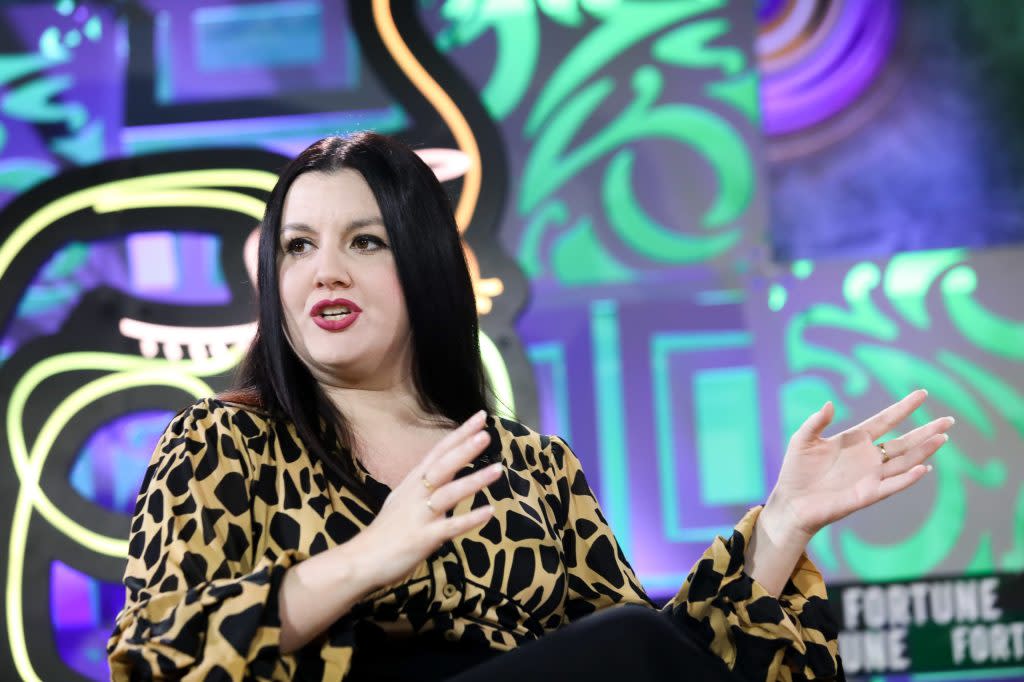Instacart CEO Fidji Simo celebrates the grocery delivery platform’s mixed-blessing IPO
Good morning, Broadsheet readers! GM CEO Mary Barra could be a problem for Joe Biden, British Vogue taps Chioma Nnadi as the magazine's first Black female editorial head, and senior writer Maria Aspan interviews Instacart CEO Fidji Simo about her company's trading debut. Have a great Wednesday!
- Delivering the goods. It took two very long, tumultuous years, but this week, CEO Fidji Simo finally pulled Instacart onto the public markets.
On Monday, the grocery-delivery company priced its long-awaited IPO, raising roughly $660 million and valuing itself at about $10 billion. That was only a quarter of the company’s eye-popping private valuation in 2021, when private investors believed that Instacart was worth $39 billion. But if you ignore that massive discount, Instacart’s Nasdaq debut was generally a success. Its shares rose more than 12% on Tuesday, to close at $33.70 on their first day of trading, and signaled a further thawing of the long-frozen IPO markets.
“While it has been a long time coming, it has also given us a chance to build a much stronger business,” Simo told me in a brief interview this week.
“When I took over as CEO, there was this big question about whether Instacart would be just a pandemic fad,” she added. “But the last two years gave us a chance to completely transform the business.”
She’s done that by following through on many of the strategies she first laid out for me in 2021, when I profiled Simo for Fortune at the start of her Instacart tenure. The former Facebook senior executive replaced founder Apoorva Mehta as CEO in August 2021, with the goal of building Instacart into more than just a grocery-delivery app powered by low-paid gig-economy workers.

The pandemic had sent the startup’s delivery business soaring, but as lockdowns eased and customers stopped being willing to pay high delivery fees to have someone else shop on their behalf, Instacart needed to develop other ways to make money. Simo, a veteran marketer, took over with plans to build up Instacart’s advertising business and third-party tech services for the retailers that use its platform.
She has broadly succeeded: In 2022, advertising accounted for $740 million in sales, or nearly a third of Instacart’s $2.6 billion in total revenue. The company turned a profit of $428 million in 2022, compared to a year-earlier loss of $73 million.
Still, Simo has more work to do at Instacart. Total number of grocery orders—still at the core of what Instacart sells—were flat in the first six months of 2023. Then there are the expectations of Instacart’s board—including representatives of its private investors. (That group no longer features the founder she replaced: Mehta officially stepped down as chairman this week, more than a year after Instacart said he would leave the company upon the IPO.)
While Simo glosses over questions about the IPO’s valuation write-down, she acknowledges that she still has plenty of work ahead.
“Markets will ebb and flow. But what I do control are the business results that we put out,” she says. “We have been able to really make a big turnaround in the financial results of the company—so from that perspective, the board is very happy.”
Maria Aspan
maria.aspan@fortune.com
@mariaaspan
The Broadsheet is Fortune's newsletter for and about the world's most powerful women. Today's edition was curated by Joseph Abrams. Subscribe here.
This story was originally featured on Fortune.com
More from Fortune:
5 side hustles where you may earn over $20,000 per year—all while working from home
Want more for your money? These 14 savings accounts have rates of 5% APY (and higher)
Buying a house? Here's how much to save
This is how much money you need to earn annually to comfortably buy a $600,000 home
